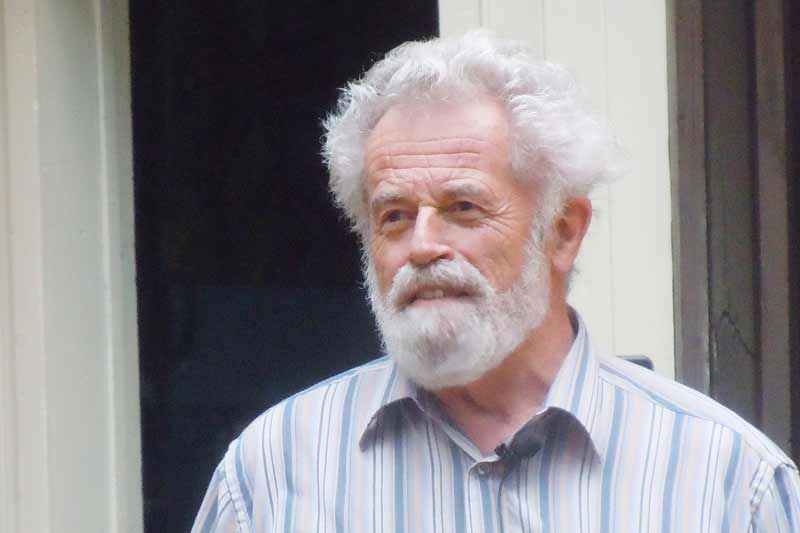Jul 17, 2014
It came as no surprise to find Bon Echo Provincial Park recommended as one of Ontario's premiere camping destinations in a recent article in the Globe and Mail's travel section. The park, located just north of Cloyne on Highway 41, offers campers and one day visitors all of the usual amenities. Yes, Bon Echo has that and so much more.
The park is one of a kind when it comes to unique Canadian landscapes. The famed Mazinaw Rock, which stretches 1.5 kilometres across and stands 100 metres high above Mazinaw Lake, is the same granite rock cliff that was the muse for members of the Group of Seven painters. Today the rock continues to inspire artists and campers who are lucky enough to get a glimpse of it.
Rising above one of Ontario’s deepest lakes, it is an awe-inspiring sight. It was once and perhaps still is a spiritual landscape for Aboriginal Canadians, whose pictographs can be seen on the boat cruises that are offered several times every day in the summer. The rock face is a stunning geological wonder that both humbles its onlookers and begs the question: How? Thanks to the Friends of Bon Echo, a group of over 100 volunteers who last year celebrated their 25- year anniversary, that question was answered recently. The Friends fundraise close to $50,000, which they use to provide some of the best educational programming in any of the Ontario parks. Their national heritage programs are enjoyed by over 50,000 campers annually.
On July 12 the Friends sponsored a talk at the park’s amphitheater given by Dr. David Pearson, science director of Science North and professor of ecological studies at Laurentian University in Sudbury. Pearson divided his talk into two parts. In the first he invited listeners to imagine the 1.5 km thick layer of ice that once covered the cliff site roughly 23,000 years ago. The gradual melting of the ice helped to create the glacial lakes that would later become the Mazinaw. He spoke of “glacial erratics”, namely the unique rounded boulders that dot the park, which were formed when water melting from the enormous ice sheet lubricated its lowest reaches and ground the rocks into their present day smooth, rounded forms.
Pearson also spoke of “eskers”, the long winding ridges of sand and gravel left behind from glacial melts. He also described “moulins”, which are roughly circular, vertical to nearly vertical well-like shafts within a glacier through which water enters from the surface. One such glacier covered the park’s most northern tip.
In the second half of his presentation Pearson invited listeners to travel back millions of years in time, specifically to the time of the existence of the continent of Rodinia one billion to 800 million years ago, which accounts for the unique geographical formations in the park. He spoke of the break up of Rodinia 180 million years ago into the continents we now know as North America and Africa.
Regarding the extreme depth of Mazinaw Lake, over 400 feet in some spots, Pearson related that over 25,000 years ago when the ice sheet that covered most of North America melted and retreated from the cliffs above Mazinaw Lake, huge icebergs fell off into the ground below, creating incredibly deep pot holes, which account for the lake’s extreme depth.
In his presentation Pearson shared his own personal feelings for Mazinaw Rock. “This rock dates back a long, long way and deserves enormous respect. It most definitely has a heck of a story to tell.”
For those who have yet to visit Bon Echo Park, it is more than worth the trip. Its unique and awesome landscape never fails to inspire a sense of wonder and luckily the sight remains accessible to all.
The next big event to take place at Bon Echo Park is the Friends of Bon Echo's annual Art Exhibition and Sale on July 25-27 from 10am-4pm. Don't forget to support the Friends of Bon Echo, who will be offering up a BBQ lunch and raffle tickets for three grand prizes that include one original art work and two impressive canoes. For more information about other upcoming events at the park or to become involved with the Friends of Bon Echo visit www.bonechofriends.ca
More Stories
- Latest CUPW Job Action Stops Postal Delivery Of The Frontenac News Forcing Alternate Plans
- Opponents of Barbers Lake Gravel Pit Pack Ag Hall in McDonalds Corners
- Bobsleigh Olympian Jay Dearborn At Mikes Pizza In Sydenham
- The Loins Club Of and O'Lakes Roar
- North Frontenac Back Roads Studio Tour - September 27 and 28
- Sunday Market Vendors Give Back
- George Street Work As Town Hall Renovation Nears Completion
- One Way Street Plan Hits A Dead End - Central Frontenac Council, September 9
- Global Gardening
- No Winner Yet in Catch The Ace But Fundraising Target Met

